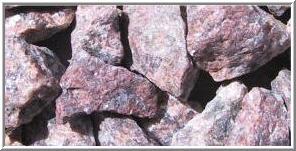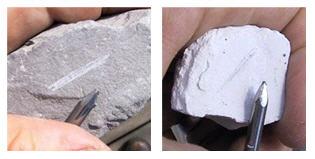As this is an EarthCache, there is no
container and there are special logging requirements which must be
met in order to log the find. Logs not meeting the requirements may
be deleted.
- The listed coordinates are near the quarry.
-
- Nearby parking is available. -
Local information:
In the late 1800s red granite was discovered here in what was at
the time known as Sand Prairie. Mining soon followed this discovery
and attracted skilled stonecutters from as far away as Europe.
Granite blocks were cut for use in street building and routinely
shipped as far as Chicago. In the early to mid 1920s the
introduction of Portland cement greatly decreased the demand for
granite as a paver.
Visitors to the park may swim, fish or scuba dive
at their own risk as there are no life-guards. Redgranite Quarry
Park is located on the north side of Hwy. 21 behind the post office
in downtown Redgranite. Park hours which are from 7am to 7pm are
strictly enforced. Please abide by the posted hours and rules while
visiting.
- Red Granite
-

Wisconsin's State Rock:
On March 9, 1971 Wisconsin designated red granite as its state rock
in part due to its abundance, uniqueness, economic value, and
historical significance. The word granite comes from the Latin
granum, a grain, in reference to the grained structure of such a
crystalline rock. In our area, we often find granite along railroad
tracks, in parking lots, in river gravels -- and in graveyards
(many headstones are made of red granite).
Granite formation:
Granite being an igneous rock, was formed under great pressure deep
beneath the Earth's surface. Igneous rocks are one of the three
main rock types (the others being sedimentary and metamorphic
rock). Igneous rocks are formed by slow solidification of cooled
magma (molten rock). Larger crystals are generally indicative of
longer cooling times.
Widely distributed around the world, mountain ranges are often
made up of large amounts of granite. Much of the granite seen today
was intruded onto the Earths crust during the Precambrian period
(from 4,567.17 to 542 million years ago) however granite has
intruded onto the Earths crust during most geologic periods.

Red granite appearance:
From a distance, red granite looks reddish or pink. Here the
granite is made mostly of the minerals feldspar and quartz. The
feldspar gives this granite its red hue and the quartz crystals
appear as a semi-clear gray or purple color. There are also small
crystals of mica and other darker minerals which appear as specks
in the rock. Many broken surfaces are flat and shine in the
sunlight.
Uses of granite:
Because of its hardness and comparative cheapness in relation to
marble, granite has been used for thousands of years for both
internal and external features. It is commonly used outdoors in
construction of buildings, bridges, paving, for monuments (like
Mount Rushmore) and indoors for items such as tile, countertops,
stair treads and much more. It can be cut into virtually any shape,
and is practically unscratchable.
- Logging Requirements: -
1. Take a photo of yourself with your GPS (or
your GPS alone) at a recognizable part of the site. I may allow
exceptions to this requirement if you contact me PRIOR TO LOGGING
your find on a case by case basis.
2. There is a post near the edge of the quarry
with three 3 signs attached to it. What does the middle sign
warn of at
this location?
3. Perform a scratch test on the rock and
email me through my profile the results of your test. Did you
scratch the rock with the nail OR did the nail scratch off on the
rock surface?

To carry out the scratch test all you need is a
shiny new nail. Using the sharp point of the nail on a flat section
of rock, try to scratch a small line (less than an inch in length
is fine) on the surface of your rock. If the nail digs in and
scratches off a line of powdered rock, then the nail is harder than
the rock.
In the example pictured above (left) the nail
scratched off a line of powdered white limestone. In the example on
the right the nail rubbed off on the rock thus the rock was harder
than the nail.
Sources:
http://saltthesandbox.org/rocks/scratchtest.htm
http://www.cloburn.co.uk/thequarryprocess.htm
http://www.redgranitewisconsin.com/
http://www.shgresources.com/wi/symbols/rock/
http://en.wikipedia.org/wiki/Igneous_rock
This listing approved on
12/16/2008 by the Redgranite village board at its scheduled
meeting.
*Extra special thanks to Geocacher team
"JimandLinda" without whom this cache would
not have been possible.
Short video Tour.